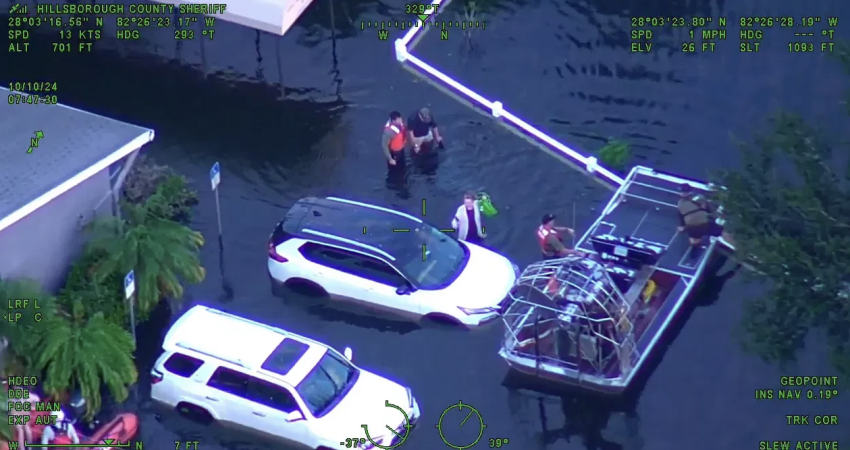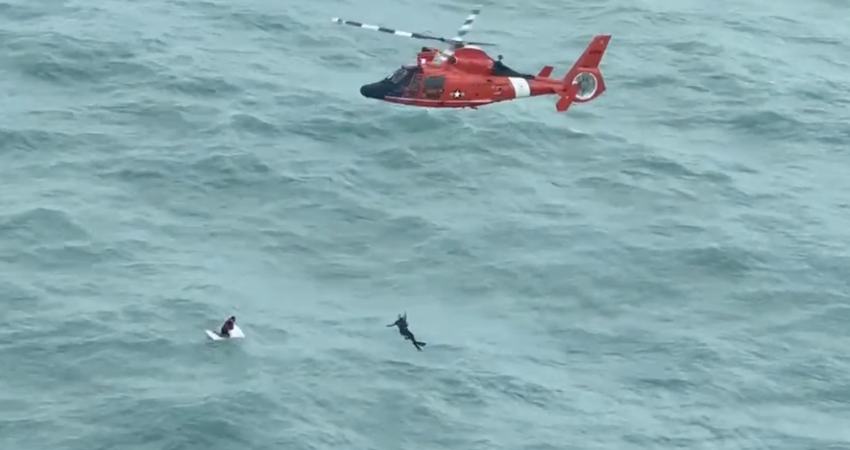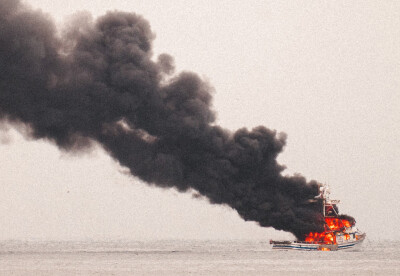Florida ports swiped by hurricane Milton’s 120 mph winds began limited reopenings after the storm passed. Water rescues continued across the state as rivers continued running high from the rains up to 18”.
A fishing boat captain trying to repair his disabled vessel was rescued by a Coast Guard aircrew 30 miles off Longboat Key Thursday, where they found the man wearing a life jacket and clinging to a floating cooler.
At a press conference Friday in St. Petersburg, Gov. Ron DeSantis said 1,600 people had been rescued from flooded homes, and operations were continuing in still flooded areas. About 2.4 million homes were still without power, but 1.6 million had been restored to the grid by Friday morning, said DeSantis.
The Tampa Bay region escaped a potentially catastrophic storm surge when shifting winds blew water back out Wednesday night into early Thursday. At least a dozen deaths have been blamed on the storm, most in a swarm of tornados that Milton spawned along Florida’s eastern side, miles away from the Gulf of Mexico landfall.
The National Weather Service continued to issue inland river flood warnings across Milton’s path, and coastal flood warnings continued Friday for Jacksonville south to Flagler County. But Jacksonville port officials reported that, Friday morning, all facilities there had reopened.

North of Milton’s Wednesday landfall near Siesta Key, the Coast Guard Captain of the Port St. Petersburg reopened Port Tampa and Seaport Manatee Thursday with some restrictions. Vessel movements requiring federal pilotage were prohibited, including U.S. vessels over 1,600 gross tons and U.S. petroleum barges over 10,000 gross tons.
Vessels may move only during daylight hours, with minimum visibility of 3 nautical miles, according to the Coast Guard. Intra-port vessel movements such as berth shifts are not restricted.
Surveys and assessments continued Thursday in Florida: St. Petersburg, Fort Myers, Port of Palm Beach, Fort Pierce, Port Canaveral, and Fernandina.
Elsewhere in the Southeast U.S., ports opening Thursday included:
- In Florida: Key West, Port Everglades, Port Miami and the Miami River
- In Georgia: Brunswick, Savannah
- In South Carolina: Charleston, Georgetown
During the Coast Guard’s offshore rescue Thursday, a helicopter crew launched around 5:30 a.m. to search for the missing captain of the fishing vessel Capt. Dave.
The captain and a crew member had originally been picked up by a Coast Guard helicopter Monday, after the captain called Coast Guard watchstanders at St. Petersburg to report their boat was disabled about 20 miles offshore.
That afternoon the aircrew hoisted the two fishermen and brought them back to Air Station Clearwater. The vessel was left adrift and salvage arrangements were to be made, according to a Coast Guard statement.
Then, around noon on Wednesday, the boat owner of the fishing vessel reported to St. Petersburg watchstanders that the captain “went back out to the boat to make repairs at approximately 3 a.m. and hadn't checked in,” according to the Coast Guard statement. “Watchstanders were able to make radio contact with the captain who reported the rudder was fouled with a line and became disabled during his transit back to port.”
As Hurricane Milton was approaching, seas were 6’ to 8’ with 30 mph winds and quickly deteriorating. Watchstanders instructed by the Coast Guard to put on a life jacket and stay with the vessel's emergency position indicating radio beacon. But the watchstanders lost communications with the captain around at 6:45 p.m.
Searching as the storm gathered strength, the aircrew located the captain, still with his EPIRB and riding a floating ice chest, 30 miles off Longboat Key around 1:30 p.m. The aircrew brought the man to Tampa General Hospital for care after his overnight survival.
“This man survived in a nightmare scenario for even the most experienced mariner," said Lt. Cmdr. Dana Grady, Sector St. Petersburg's command center chief. "To understand the severity of the hurricane conditions, we estimate he experienced approximately 75-90 mph winds, 20-25 foot seas, for an extended period of time to include overnight. He survived because of a life jacket, his emergency position indicating locator beacon, and a cooler."








